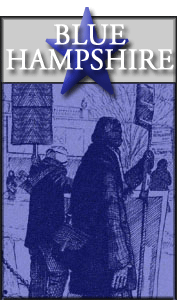|
Methodology
I begin by comparing the average national two-party vote from 2004 and 2008 Presidential elections (Democrats: 51.2%) with the projected national two-party vote for the upcoming election to determine a projected partisan index for each district. For example, if polls predict a 52.2% Democratic vote, I adjust the House District PVI by +1.0.
I then calculate the probability of a partisan outcome in each district. I sort the districts based on PVI and then group them together in 20 groups of approximately 20 representatives per group. Next, I calculate the average percentage of partisan seats in each group for 2004 and 2008 (the years included in the PVI calculations) and plot those points that have partisan percentages between zero and 100% for both years.

I then factor each seat’s projected partisan index by the result to determine the probability of a partisan result. For example, a seat in a district with projected partisan index of +5 has approximately a 65% probability of electing a Democrat. I then run 100,000 simulations for each of the 400 seats to complete the forecast.
Validating the Model
To test the model, I simulated the State House elections of 2004, 2006 and 2008 (the period covered by the PVI calculations). For 2004 and 2008, I use the national two-party Presidential vote (in lieu of the projected national two-party vote), in 2006 I used the national two-party Congressional vote. In each case, the projected results are within five seats of the actual results.



Forecasting the 2010 Election
Looking backwards, of course, I have the advantage of being able to use actual rather than projected national voting results. To forecast the 2010 results, I will use the results from generic Congressional ballot surveys of likely voters -- more on that and the 2010 forecast in Part 2.
Cross-posted to Miscellany Blue
|




